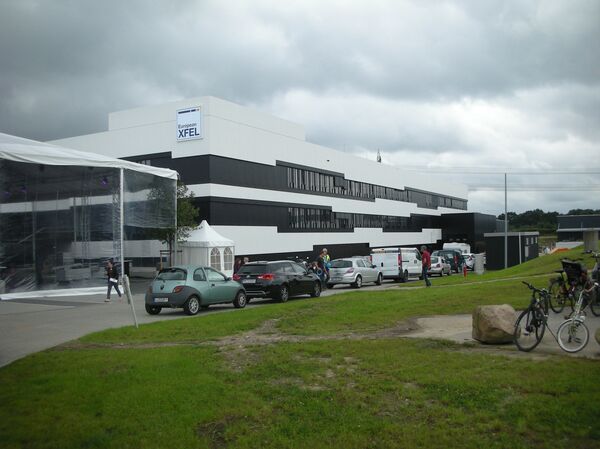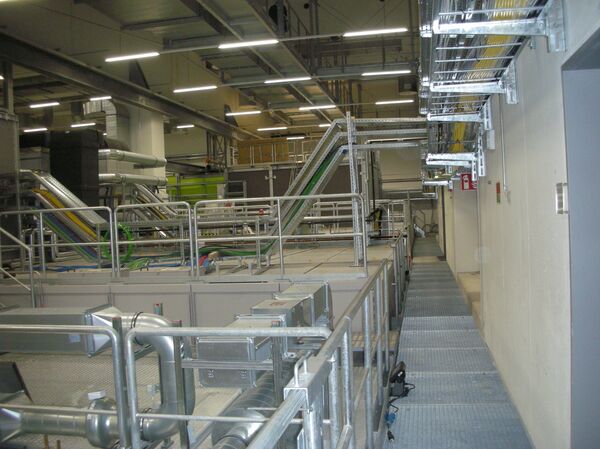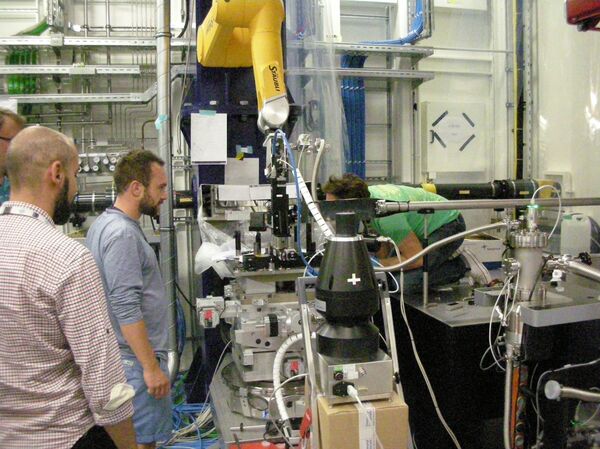Professor Robert Feidenhans'l, managing director of the European X-Ray Free Electron Laser (XFEL) project, said in an exclusive interview with Sputnik Germany that the XFEL laser may add significantly to a major breakthrough in biology and other fields of research.
"It will help us discover new sources of energy, for example, for photovoltaics. The chemical industry and pharmaceuticals may also benefit from the project," he said.
The interview took place on the territory of a large scientific center in Schonefeld near Hamburg, where the XFEL laser was put into operation at 15:00 local time on Friday.

"We generate here ultrashort light waves which should be in line with the time scale of molecules, so that we then could produce radiation beams" for taking photos of the smallest atomic and molecular structures, Feidenhans'l said, referring to the principle of the XFEL laser's operation.
In this regard, the XFEL laser can be likened to a giant microscope, something that was also developed in Japan and the United States.
"Researchers from Stanford and Japan look at us with some envy," Feidenhans'l said. Even so, scientists from all across the world continue to actively cooperate and relay experiences in the field of X-ray and laser physics.
An International Project Where Russia Actively Participates
The cost of the XFEL project is about 1.5 billion euros, with Germany alone allocating 760 million euros from the federal Ministry of Education and Science. Russia contributed 27 percent of the project's budget, making it the second largest financial contributor.
Apart from Russia, a number of European countries are taking part, including Denmark, France, Britain, Italy, Poland, Sweden, Switzerland, Slovakia, Spain and Hungary.
Rosemary Wilson, press secretary of the Schonefeld research center, explained in an interview with Sputnik Germany that thus far, there have been two XFEL-related scientific experiments in the catacombs, such as Instrument FXE and the SPB Instrument.
"Further experiments are expected [in the future]. By 2019, we will probably have four more experimental teams who will deal with the XFEL laser. Reaching an experimental phase is incredible and exciting," Wilson said.
The Unique Laser: The Fastest X-Ray Camera, the Highest Energy of Photons
Dr. Christian Bressler, head of FXE Experiment Team, is working with his colleagues at the so-called "experimental dungeon" of the Schonefeld center located at a depth of 14 meters below Earth surface.

Speaking to Sputnik Germany, Bressler explained that in order to find out how atoms move in chemical reactions, electrons are accelerated in a 3.4-km tunnel to a speed of 17 electron-volts.
The accelerated electron beam produces very short flashes in the X-ray range which illuminate various chemical or biological processes.
"To shoot all this, we need to use many cameras at once. We have the fastest X-ray camera in the world which is capable of taking photos of molecular structure. On the side, we have another camera which shoots electrons. The goal is to track the very beginning of the chemical reaction," Bressler said.
According to him, the XFEL laser is the world's largest and most powerful linear accelerator, which replaced the X-ray laser located at Stanford University in the US.
Bressler drew attention to the fact that unlike the X-ray laser in Stanford where scientists managed to reach the speed of only 120 flashes per second, the XFEL laser produces up to 27,000 flashes per second, something that he said for some fraction of a second exceeds the brightness of sunlight.
"This is a revolutionary contribution to our basic research," he said, describing the high photon energy as the second unique feature of the XFEL laser.
Exploring Viruses
As for the SPB Instrument team, they are based directly next door to the team of Dr. Bressler.
"We mainly deal with biology and pharmaceuticals," Dr. Marc Messerschmidt, head of the SPB Instrument team, said in an interview with Sputnik Germany.
"We explore substances that directly affect proteins or receptors. In addition, we can look directly at viruses and someday we will be able to tell pharmacists about the viruses' atomic structure. It will help them develop certain substances that will adapt to a certain virus," Messerschmidt said.
At the end of the day, it will help the pharmaceutical industry save a number of years of research, according to Messerschmidt who said that it is "very interesting" to work together with foreign colleagues. In total, about 300 people are engaged in the experiment.

Wilson, for her part, stressed that the European XFEL is a non-profit public organization which closely cooperates with the DESY research center at Hamburg-Bahrenfeld, but which "works independently."
Earlier, Mikhail Kovalchuk, head of the Kurchatov Institute, Russia's leading research and development institution in the field of nuclear energy, told Sputnik that the XFEL laser will allow the scientists to get acquainted with nature-like technologies, and therefore, enhance research in various fields of natural science.

"This is a unique research tool, first of all, in the areas of nano and bio technologies. With the help of the hyper-luminous and ultrashort impulses of x-rays, the scientists will be able to see ongoing processes in the nanoworld. It will allow us to enhance research in the spheres of physics, chemistry, life sciences, material science, and biomedicine," Kovalchuk said.

